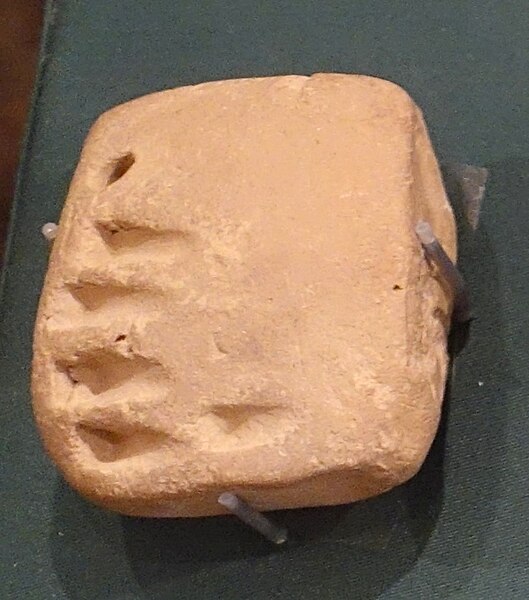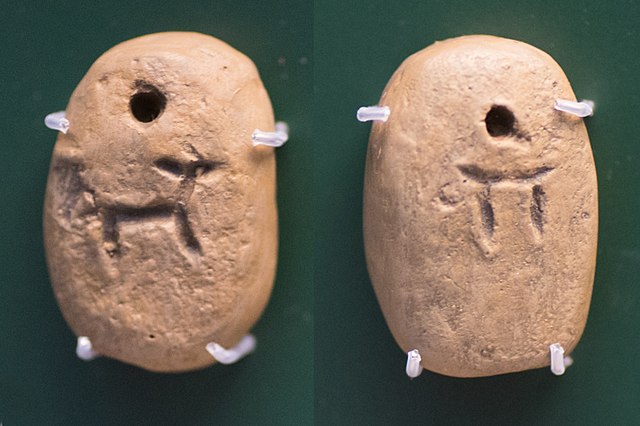Mari was an ancient Semitic city-state in modern-day Syria. Its remains form a tell 11 kilometers north-west of Abu Kamal on the Euphrates River western bank, some 120 kilometers southeast of Deir ez-Zor. It flourished as a trade center and hegemonic state between 2900 BC and 1759 BC. The city was built in the middle of the Euphrates trade routes between Sumer in the south and the Eblaite kingdom and the Levant in the west.
Ruins of Mari
The name of Mari (Cuneiform: 𒈠𒌷𒆠, ma-riki), on the statue of Iddi-Ilum, c. 2090 BC
Statue of Ebih-Il, a superintendent in Mari. (25th century BC)
Helmetted warrior with axe, Mari
Cuneiform is a logo-syllabic writing system that was used to write several languages of the Ancient Near East. The script was in active use from the early Bronze Age until the beginning of the Common Era. Cuneiform scripts are marked by and named for the characteristic wedge-shaped impressions which form their signs. Cuneiform is the earliest known writing system and was originally developed to write the Sumerian language of southern Mesopotamia.
A trilingual cuneiform inscription of Xerxes I at Van Fortress in Turkey, an Achaemenid royal inscription written in Old Persian, Elamite and Babylonian forms of cuneiform
Clay bulla and tokens, 4000–3100 BC, Susa
Numerical tablet, 3500–3350 BC (Uruk V phase), Khafajah
Pre-cuneiform tags, with drawing of goat or sheep and number (probably "10"), Al-Hasakah, 3300–3100 BC, Uruk culture








